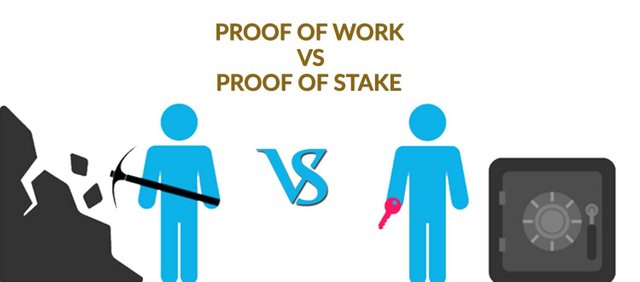
Image edited on canva
Hello crypto enthusiasts!
This is homework task for professor @sapwood - lesson - Different Types Of Consensus Mechanisms. Enjoy!

Question
What is the difference between PoW & PoS? Advantages & Disadvantages? Which one is better in scaling Capacity? Examples?

What is the difference between PoW & PoS?
Proof-of-Work (PoW) and Proof-of-Stake (PoS) are consensus mechanisms. A consensus model or mechanism is a backup or stand-in mechanism which is used in blockchain systems and computers to attain the compulsory agreement on a single value of data among consensus systems available in cryptocurrencies. The consensus mechanism is very useful for keeping records.

source
Both Proof-of-Work (PoW) and Proof-of-Stake (PoS) are agreements or protocols that are implemented on many blockchain systems to ensure the safety of the security systems to avoid cyber attacks. They are the two most commonly used consensus mechanisms among others.
Proof-of-Work (PoW):
Proof-of-Work (PoW) was developed by Satoshi Nakamoto, the person who created Bitcoin. PoW is the most commonly used consensus model and it is the first consensus model to be used in blockchain systems. PoW ensures the decentralization of cryptocurrencies (no central authority controlling cryptocurrencies).

source
In Proof of Work, the possibilities of mining blocks depend on the workforce of the miners. All miners compete with each other to solve mathematical problems to validate the transactions and rewards are given to the first miners who solve each block problem simultaneously.
Ethereum, Bitcoin, Dogecoin, Litecoin are among the many cryptocurrencies that use Proof of Work.
Proof-of-Stake (PoS):
Proof of Stake is also a consensus model. it was created to replace Proo of Work to ensure more energy efficiency in blockchain technology. PoS is used to add new blocks to a chain and validate the transaction.
In Proof of Stake, a deterministic approach is used to choose the miner of a new block, depending on its assets called stake. Unlike PoW, miners don't receive a block reward but they accept transaction fees as their reward. It is more energy-efficient than the PoW system. Some of the cryptocurrencies that use the Proof of Stake protocol are; VeChain (VET), Cosmos (ATOM), Solana (SOL), etc.

source

Advantages & Disadvantages? (of PoW & PoS)
Proof-of-Work (PoW):
See three advantages/merits and disadvantages/demerits of PoW in the table below;
| Advantages | Disadvantages |
|---|---|
| It ensures the decentralization of cryptocurrencies in blockchain technology. | Its slow during transaction processing and also expensive. |
| It is very difficult to attack/hack because of its security. | The energy consumed in PoW is high. |
| Miners earn cryptocurrency rewards and also receive a share of transaction fees. | It requires expensive types of equipment to mine in proof of Work. |
Proof-of-Stake (PoS):
See three advantages/merits and disadvantages/demerits of PoS in the table below;
| Advantages | Disadvantages |
|---|---|
| The Proof-of-Stake system is more energy-efficient compared to Proof-of-Work so it doesn't require excessive computational equipment. | The network becomes slower when there is an increase in a high number of validators. |
| It uses lesser hardware but ensures more users participate in the process of consensus. | The security level in PoS is lower than that of PoW. |
| It is fast when it comes to transaction confirmation. | Some users are discouraged to take part in the PoS platform due to the technological and technical barriers that come with understanding blockchain and also being a cryptocurrency owner. |

Which one is better in scaling Capacity? Examples?
As time went by, more users adopted cryptocurrencies and this kept on increasing the transactions performed in blockchain technology. Proof of Work was no longer efficient to contain a large number of circumstances as it experiences difficulty inadapting to current implementations, which means the scaling capacity of PoW wasn't really efficient.
Proof-of-Stake algorithm came into existence as a result of the poor scaling capacity of Proof-of-Work algorithm and developers had to create a better consensus algorithm. Proof-of-Stake algorithm is better because its algorithm proved its efficiency by solving a lot of the blockchain problems PoW algorithm couldn't solve, and this means PoS is better than PoW in scalability.
PoW algorithm consumes more time when creating a block in consensus blockchain than PoS algorithm.
Examples of crypto projects using PoS algorithms are; VeChain (VET), Tezos (XTZ), Cosmos (ATOM), Polkadot (DOT), Cardano (ADA), Solana (SOL), , etc.

I want to say thank you to professor @sapwood for the wonderful lesson.
